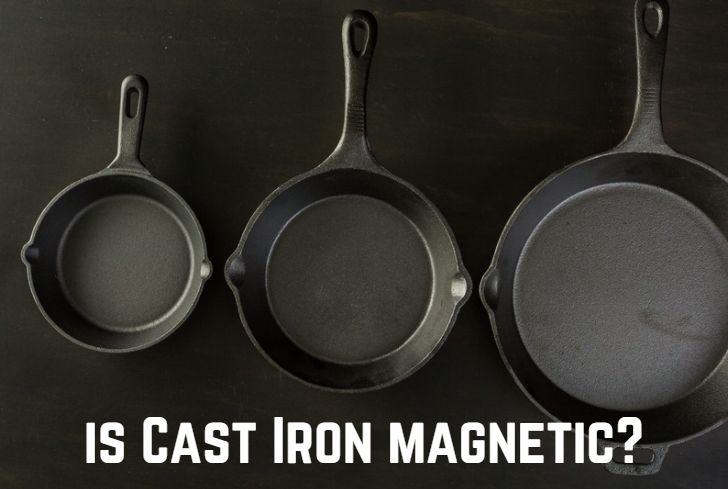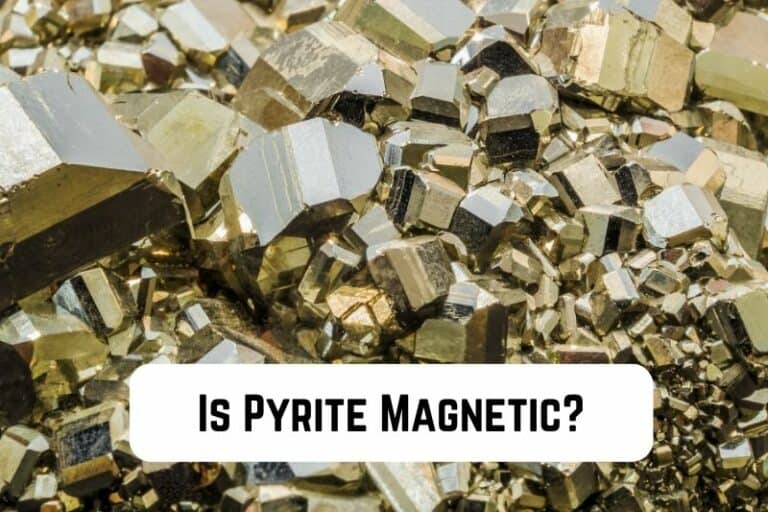Does Titanium Conduct Electricity? (Answered)

Most people are unaware that titanium is used in products like toothpaste, dental implants, paint, and aircraft. With its many uses around your home, wouldn’t it be good to know if titanium can conduct electricity? So does titanium conduct electricity?
The article explains if titanium is electrically conductive and whether its implants conduct electricity. You will also learn the answers to other questions, such as whether titanium conducts heat or conducts electricity when dissolved in water. We also tell you about other metals that don’t conduct electricity and a list of titanium’s properties.
Read: Does Graphite Conduct Electricity?
Is Titanium Conductive?
Titanium is a poor conductor of electricity. Electrical conductivity in titanium is inversely proportional to its temperature. That means titanium improves its electrical conductivity when its temperature increases. The electron arrangement in titanium makes it hard to conduct electricity effectively. The electrons in the outer orbit are not mobile and cannot pass an electric charge.
Because it restricts the amount of current that can flow through the metal, titanium makes a better resistor. On the periodic table, titanium is classified as a transition metal. These metals have a partially filled orbital. While most transition metals like copper are good conductors of electricity, titanium is the opposite of most metals in this category.
If there were a comparison between copper and titanium in conducting electricity, titanium would fair poorly. When copper conducts electricity at 100%, titanium conducts at less than 3%.
Why is Titanium a Poor Conductor of Electricity?
Because titanium’s outer shell is filled with fully bound electrons, it is a poor conductor of electricity. Titanium has an atomic number of 22, and its electronic configuration is [Ar] 3d2 4s2. Although the third shell is partially filled, titanium can still not conduct electricity. Titanium’s outer shell or orbit contains bound electrons that cannot move freely.
The arrangement of an element’s electrons in the outer shell and its electrical conductivity is related. While the electrons in the inner orbitals have some free electrons, they are closely connected to the nucleus. The atom will not quickly release the electrons that are near its nucleus. However, titanium’s ability to conduct electricity at a low intensity is due to the third orbital’s two free electrons.
The rate at which titanium opposes the current flow is 420 × 10-9 Ώ.m or electrical resistivity. Titanium’s electrical resistance rises as temperature rises and vice versa.
When exposed to air, titanium creates a protective layer that resists corrosion. The same layer is another reason titanium is a poor conductor of electricity.
Do Titanium Implants Conduct Electricity?
Implants made of titanium don’t conduct electricity. Titanium has difficulty delocalizing its electrons, making it difficult to carry an electric charge. It is not as good at conducting electricity as the other metals because of its low conductivity. Although titanium implants can rust over time in an acidic environment due to their electro-conductivity, using them is harmless.
Over several decades, people have had titanium implants surgically placed into their jawbones to replace their missing teeth jaws. Due to its durability and minimal weight, titanium biocompatible dental implants are recommended. However, some people might have concerns about them because they are composed of titanium.
There is no need to worry, as titanium has the poorest conductivity among most metals and is also non-corrosive.
Read: Does Wood Conduct Electricity?
Does Titanium Conduct Electricity When Dissolve in Water?
Solid titanium is insoluble in water. It is slow to react with water at standard temperatures and does not dissolve in water. Titanium develops a passive oxide layer when it comes into contact with water. Even the smallest electric current cannot flow because the coating prevents the electrons in the third orbit from moving.
Does Titanium Conduct Heat?
Titanium is a poor heat conductor. It lacks available free electrons that can absorb and transfer heat. Titanium has a low thermal diffusivity due to its thermal conductivity, specific heat capacity, and density. Low thermal diffusivity is the ratio of a material’s capacity for heat conduction divided by its capacity for heat storage.
Due to the poor heat transfer from hot to cold regions, elements with low thermal diffusivity exhibit significant temperature gradients in response to local heating. Titanium has a 10% lower thermal diffusivity than aluminum and 50% less than steel.
Titanium is a suitable material for several engine applications due to its low thermal conductivity, which helps shield components from the impacts of heat. Compared to steel and other materials, titanium fasteners minimize the passage of heat through joints.
Metals That Don’t Conduct Electricity
Most metals are electrically conductive, but some are not as conductive as others. Additionally, the degree of electrical conductivity varies among metals. No metal doesn’t conduct electricity totally; all metals have some degree of conductivity.
However, some metals are among the worst at conducting electricity, such as:
Tungsten
Tungsten does not carry electricity under normal temperature conditions. But in high temperatures, it can carry electricity. Tungsten’s electrical conductivity is temperature-dependent.
Despite free electrons in its outer shell, electrical current can only flow when temperatures are slightly higher than usual. Low temperatures prevent any charges from conducting electricity.
Stainless steel
Stainless steel is a poor conductor of electricity. Most individuals attribute this condition to nickel and chromium in stainless steel and its other alloys. In stainless steel, these two components aid in preventing corrosion.
The main components of stainless steel are iron and carbon. Its alloy structure is the most significant factor in its poor capacity to carry electricity. With a thermal conductivity of only 15 watts per Kelvin per meter, it is even less thermally conductive than carbon steel. It has an electrical conductivity of roughly 1.4 million siemens per meter at room temperature.
Lead
It is surprising that though lead has free electrons that can carry electric charge, it is a bad conductor of electricity. But its non-conductivity is supported by the fact that lead reacts with atmospheric oxygen to form a layer of lead oxide. The layer of lead oxide has no free electrons, thus ensuring that no electric current passes through.
Read: Does Diamond Conduct Electricity?
Lead has a resistivity of 22 billionths of an ohm-meter. It is the rate at which lead can resist the flow of electricity.
Bismuth
It is a poor conductor of electricity due to its high electrical resistance. Of all the metals, bismuth has the lowest thermal and electrical conductivity. The metal, which is crystalline white with a faint pink tinge, is the most brittle of all metals.
The periodic table’s element 83, bismuth, is more of a post-transition-metal. Due to its low melting point, it helps to create alloys for molds, fire extinguishers, and detectors.

Properties of Titanium
The hard, shiny metal titanium is substantially less dense than steel yet just as strong. It is the perfect alloying agent because it mixes well with other metals like iron, aluminum, and molybdenum. The alloys can tolerate extreme temperatures and have a low density.
Read: Does Concrete Conduct Electricity?
Some properties must make titanium the material of choice for alloys. These are a few of its properties.
1. Non-corrosive
Titanium has strong corrosion resistance, making it resistant to attacks from minerals and chlorides. It is biocompatible with human tissues and bones thanks to the same property. In addition, titanium is useful in marine environments, biomaterial applications, and chemical and petrochemical processes.
When oxygen and water are present, titanium behaves like an inert substance. That indicates that it does not react with water and oxygen at standard temperatures.
Titanium does this by creating a passive oxide coating.
2. Hard
Of all the metals, titanium has the highest strength-to-weight ratio. Titanium has great strength despite having a low density. Despite being 45% lighter than steel, titanium is just as strong. The two qualities make titanium the perfect metal to alloy.
Given its reputation as a hard metal, titanium can be challenging when machining. The heat produced during the cutting operation tends to stay close to the tool since it is a poor heat conductor. The heat makes the tool dull.
3. Low-density
Low-density titanium is strengthened through alloying and deformation processing. Although titanium has the strength of steel, it is only about 60% as dense as iron. Titanium is frequently used to build aircraft and spacecraft because of its low density and high tensile strength.
4. High melting and boiling point
The melting and boiling points of titanium are, respectively, 3135°F (1725°C) and 5948.6°F (3287°C). It is the perfect refractory material because of these two factors. When subjected to chemical attack, heat, and pressure, a refractory material cannot easily dissolve. Titanium remains strong and in good form even at very high temperatures.
5. Poor thermal and electrical conductivity
Titanium does not conduct heat or electricity because its outer orbit lacks mobile electrons. However, at very low temperatures, titanium is superconductive.
Conclusion
Heat and electricity do not conduct well through titanium. Heat and current electric carriers are absent from the outer orbit because there are no free electrons. The presence of free electrons in titanium’s third orbit gives it the limited capacity to carry heat and electricity. The atom’s nucleus, however, holds the electrons quite tightly, preventing them from reaching very far.






